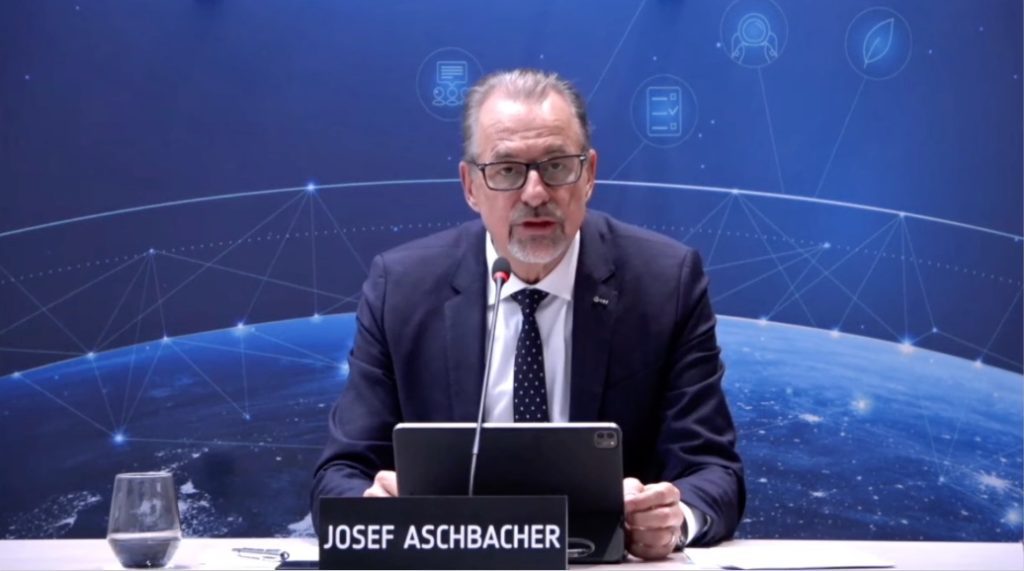WASHINGTON — The European Space Agency is impressed with India’s growing space capabilities and is looking into possibilities for greater cooperation in space activities.
At a media briefing on March 27 after an ESA Council meeting, Renato Krpoun, the council chair, mentioned that an ESA presentation was given by S. Somanath, chair of the Indian Space Research Organisation (ISRO).
Krpoun stated that Somanath presented an impressive vision for the future of the Indian space program.
Josef Aschbacher, ESA's director general, remarked during the briefing that Somanath’s presentation provided an update on recent ISRO activities and highlighted the developments in India.
He mentioned that in late 2022, he and Somanath discussed intensifying their collaboration in various space activities. They agreed to further explore this possibility.
This exploration included a week-long visit by an ESA delegation to India to discuss options in science, exploration, and operations. The specific cooperative missions or programs being considered, as well as their schedules, were not elaborated on. Any plans advancing and requiring funding from ESA member states would be part of the proposals for the next ministerial conference in late 2025.
“This is an ongoing exercise, but certainly the spirit is very positive,” he concluded. “There is an interest on both sides to intensify the cooperation, which already has been excellent, but to increase it and enlarge it a bit.”
There is cooperation between the two agencies today, although at a relatively low level. In July 2021, ISRO gained access to ESA ground stations for some of its missions, like the Chandrayaan-3 lunar lander and Aditya-L1 solar science spacecraft, in exchange for ESA access to ISRO tracking stations for some missions. ISRO has also cooperated directly with some ESA member states, notably France on a series of Earth science missions. agreement India is also
elevating its cooperation with the United States in space . India joined the Artemis Accords in June 2023 and the governments of the two nations indicated at the time that they would develop a “a strategic framework for human spaceflight cooperation” that could include flying an Indian astronaut to the International Space Station.In progress developments
The ESA Council meeting discussed several other topics, but with few new developments. ESA confirmed that the first launch of the Ariane 6 remains scheduled for between the middle of June and the end of July. Aschbacher said a more precise launch date should come in late April, after the completion of a qualification review.
ESA remains on track to make selections for a new commercial cargo program at the next Space Summit, scheduled for May 23 in Brussels. The agency expects to select up to three companies for “phase one” study contracts, with phase two awards to develop the spacecraft to come after funding is secured at the 2025 ministerial conference.
ESA is also closely monitoring NASA’s current review of the Mars Sample Return (MSR) mission. ESA is involved in MSR, providing the Earth Return Orbiter and a robotic arm to move samples from the Perseverance rover to the lander that will launch them into orbit. The ongoing review,
which was prompted by an independent assessment last autumn that found MSR was significantly over budget and behind schedule , is expected to be released as early as April.“We are constantly talking with NASA” about MSR, Aschbacher mentioned. “The communication is very good and positive and productive; very open.”
“We are very dedicated to delivering our components on time and as planned,” he added.
The European Space Agency, impressed with India’s advancing space abilities, is seeking possibilities for increased collaboration in space endeavors.









